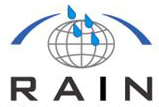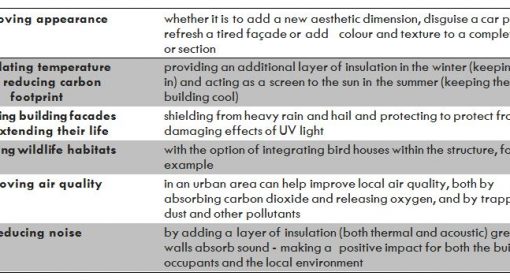Combine, Connect, Construct
Should a road be only a means of transport? Or can it do more? Could roads, for instance, not only take you from A to B but also harvest rainwater and guide runoff strategically? And can dikes – important to protect low lying communities from the threat of floods- be used for transport, building waterfront houses and even producing energy? Drains… could they have a second life as roads when they are dry?
This is the world of multi-functional infrastructure. As the world gets more congested and life more demanding, we need to rethink infrastructure. No longer is it enough for it to serve a single purpose; it should perform multiple functions. These theme pages are dedicated to multifunctional infrastructure – wetlands for water treatment; groundwater recharge zones for recreation, road crossings for water retention… there is so much that can be done better by thinking beyond a single use!
Why focus on multi-functionality? Perhaps one reason is that the problems of the present and the future—such as Climate Change, resource scarcity and fragility of eco-systems—have driven us to adopt a Systems approach to tacking them. The nexus between water, energy and food security is now well-recognised. On the same lines, it is now easy to see how our needs (e.g. transport, water, communications) and the infrastructure we build to satisfy those needs (e.g. roads, dams, telecommunications) affect each other.
Combine, Connect….
For all the theoretical work and real-world development related to multifunctional infrastructure, it is still a nebulous concept. Different disciplines understand the term differently, and the concept is still most strongly associated with the field of urban development.
This thematic page tries to gather and showcase a few examples. Apart from innovative ideas, the selection also aims to represent a variety of fields, including some other than urban infrastructure. Of course, by no means is this page meant to be a definitive resource on multifunctional infrastructure, but more a starting point that triggers discussions and raises awareness.
We urge you to participate: comment, voice your opinion, share your knowledge, post your videos… make this space your own!

Should a road be only a means of transport? Or can it do more? Could roads, for instance, not only take you from A to B but also harvest rainwater and guide runoff strategically? And can dikes – important to protect low lying communities from the threat of floods- be used for transport, building waterfront houses and even producing energy? Drains… could they have a second life as roads when they are dry?
This is the world of multi-functional infrastructure. As the world gets more congested and life more demanding, we need to rethink infrastructure. No longer is it enough for it to serve a single purpose; it should perform multiple functions. These theme pages are dedicated to multifunctional infrastructure – wetlands for water treatment; groundwater recharge zones for recreation, road crossings for water retention… there is so much that can be done better by thinking beyond a single use!
Why ‘Multi-functional’?
What’s the point of the emphasis on multi-functionality? What is lacking in the simple yet logical idea of horses for courses: a bridge to cross a river, a dam to dam it, a road to drive on, and a house as a home to live in?
Perhaps one reason is that the problems of the present and the future—such as Climate Change, resource scarcity and fragility of eco-systems—have driven us to adopt a Systems approach to tacking them. The nexus between water, energy and food security is now well-recognised. On the same lines, it is now easy to see how our needs (e.g. transport, water, communications) and the infrastructure we build to satisfy those needs (e.g. roads, dams, telecommunication systems) affect each other. For example, roads constructed for efficient transport have been known to obstruct surface runoff in ways that lead to waterlogging and erosion in adjacent fields. On the other hand, if the planning and design of roads is optimized with respect to the local hydrology and needs of local communities, it can help harvest runoff and even improve the recharge and retention of shallow groundwater.

Multiple functions, multiple needs, multiple contexts
The idea of multifunctional infrastructure originated in the area of urban planning, and forms the basis of the concept of eco-cities. However, there is little reason to keep it restricted to that context alone. As evident from the roads example cited above and others such as irrigation systems that serve multiple purposes, it makes as much sense in rural areas to treat pieces of infrastructure as components of a system rather than solutions to specific problems.
What does it take?
Examples of multifunctional infratrsucture do not necessarily represent cutting edge technology. They reflect more an appreciation of the interdependence of the various natural and man-made components that make up our environment. This calls for a high degree of coordination among the numerous stakeholders (private and public) that are usually responsible for planning and construction. This is specially relevant to water-related infrastructure, as water has a wide-ranging realm of influence, cutting across various sectors and water users. Achieving such coordination is a tall order in most countries. And most examples of effective partnerships being reached come from the context of green infrastructure in eco-cities.
According to a 2012 report by the Overseas Development Institute, upfront construction costs of green infrastructure are up to 8% higher than conventional infrastructure. The report also concludes that green infrastructure development demands strong government participation, high institutional capacities and mature markets. This raises serious doubts as to how relevant this concept is to developing economies. Nevertheless, the up-side is that 44% of green infrastructure projects have been found to reduce running costs.

Combine, Connect….
For all the theoretical work and real-world development related to multifunctional infrastructure, it is still a nebulous concept. Different disciplines understand the term differently, and the concept is still most strongly associated with the area of urban development.
This thematic page tries to gather and showcase a few examples. Apart from innovative ideas, the selection also aims to represent a variety of fields, including some other than urban infrastructure. Of course, by no means is this page meant to be a definitive resource on multifunctional infrastructure, but more a starting point that triggers discussions and raises awareness.
{jcomments on}

